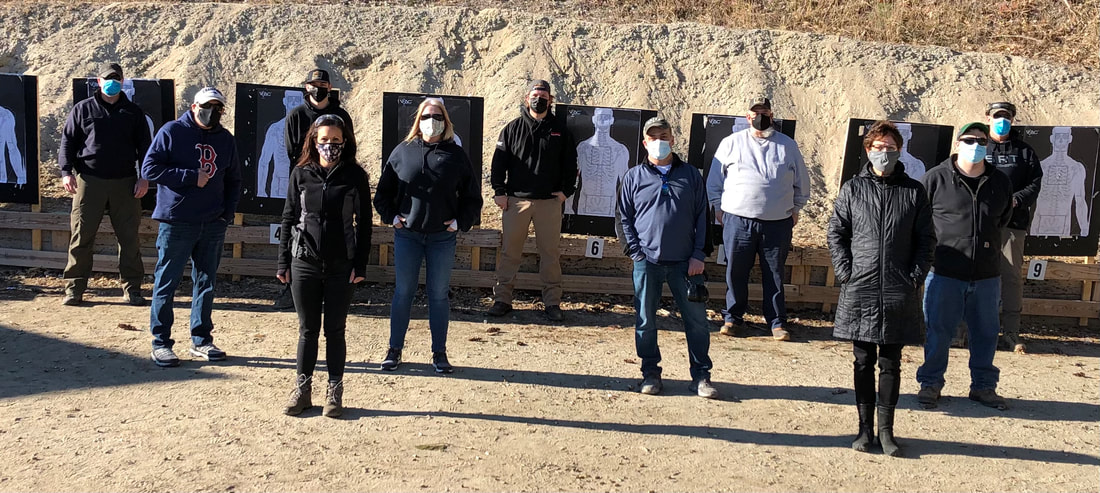In-person learning provides an opportunity to work with experienced instructors, while they provide positive feedback to improve skills. That interaction is needed to encourage students to become comfortable and confident with their firearm. Online or classroom only classes do not address your feelings when you shoot the gun, manage recoil and the shooting errors that occur during the firing process. Shooting is 90% mental and 10% physical.
In-person learning can improve student performance by conducting diagnostic drills and taking corrective actions. In Defensive Handgun 1.0 we guide students through a hands-on practice session, in a classroom, with defensive shooting fundamentals - not target shooting fundamentals. After lunch we conduct live-fire range drills. The first time a student fires their gun it’s one on one with an instructor. We have the student aim into the berm with no target. Instructors guide the student through 18 rounds in two or three magazines. This interaction between the instructor and student is crucial in the learning process. Shooting a firearm is stressful for many.
The following are benefits of attending a Defensive Handgun 1.0 live fire training class.
Train to be your own hero!
In-person learning can improve student performance by conducting diagnostic drills and taking corrective actions. In Defensive Handgun 1.0 we guide students through a hands-on practice session, in a classroom, with defensive shooting fundamentals - not target shooting fundamentals. After lunch we conduct live-fire range drills. The first time a student fires their gun it’s one on one with an instructor. We have the student aim into the berm with no target. Instructors guide the student through 18 rounds in two or three magazines. This interaction between the instructor and student is crucial in the learning process. Shooting a firearm is stressful for many.
The following are benefits of attending a Defensive Handgun 1.0 live fire training class.
- Finger on the trigger -Instructors say “finger off the trigger” 30 to 50 times in a training class. Placing your finger on the trigger, when you’re not ready to shoot is a safety issue. For many this issue is corrected at the 1.0 level.
- Shooting grip - Gripping the gun wrong can affect your accuracy and operation of your handgun. Managing your grip during the recoil process is vital for follow up shots. When students fire their handguns in class instructors identify weaknesses and provide tips to strengthen your grip. Students see the results immediately.
- Anticipation or flinching - The most common shooting error for shooters is anticipation. The mind focuses on recoil and noise of the gun being fired. Shooters tense their grip and arms in a reflexive action due to fear or an attempt to counter the recoil action. This results in your shot hitting the target in a low 6 o’clock position. We address this issue in a live fire class by placing dummy rounds in your mags with live rounds, conducting a combination for dry fire and live fire drills, or placing our finger on your trigger finger to make you concentrate on not anticipating.
- Trigger press - New shooters have a tendency to jerk or slap their trigger when they shoot. Other issues identified are: too much or too little finger on the trigger, not pressing straight to the rear, squeezing the whole hand, healing, thumbing and not resetting the trigger. These errors can be spotted by your instructor and he can coach you to improve your performance.
- Sighting – There are three techniques used in sighting. Precision shooting, use of both front and rear sights with eye focus on the front sight. Combat shooting when you’re looking at your threat or target and index your front sight center mass. Point or instinctive shooting when you don’t see your sights. When you train live-fire you can read your target and evaluate your performance.
- Stance – New shooters have a tendency to lean back when they shoot. Once the first shot is fired the shooter is pushed back on their heels and have to stop firing to adjust their stance.
Train to be your own hero!


 RSS Feed
RSS Feed